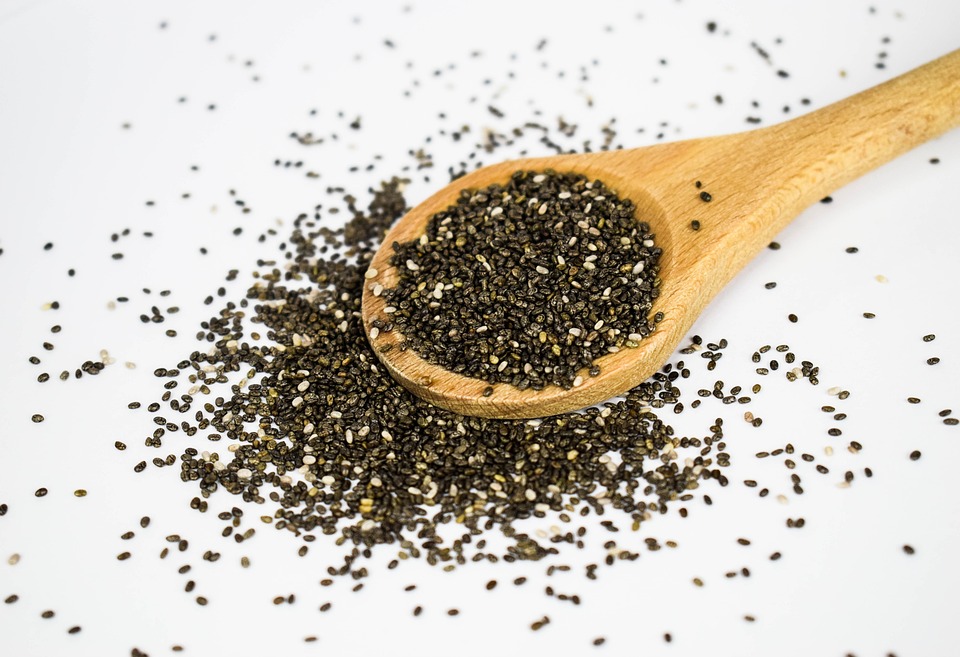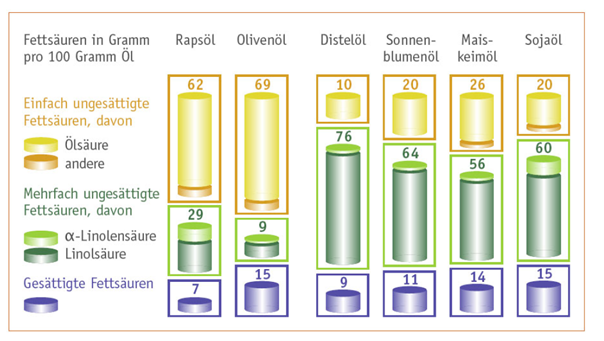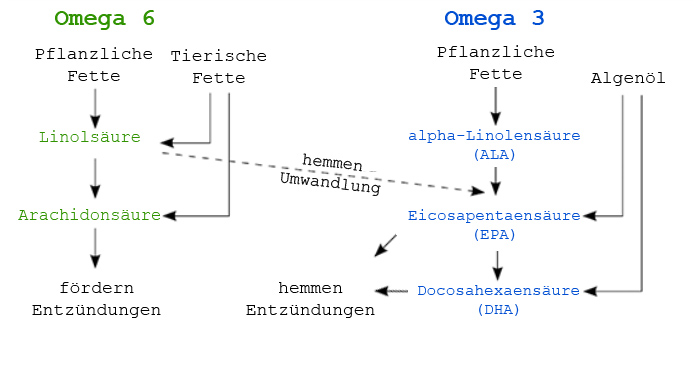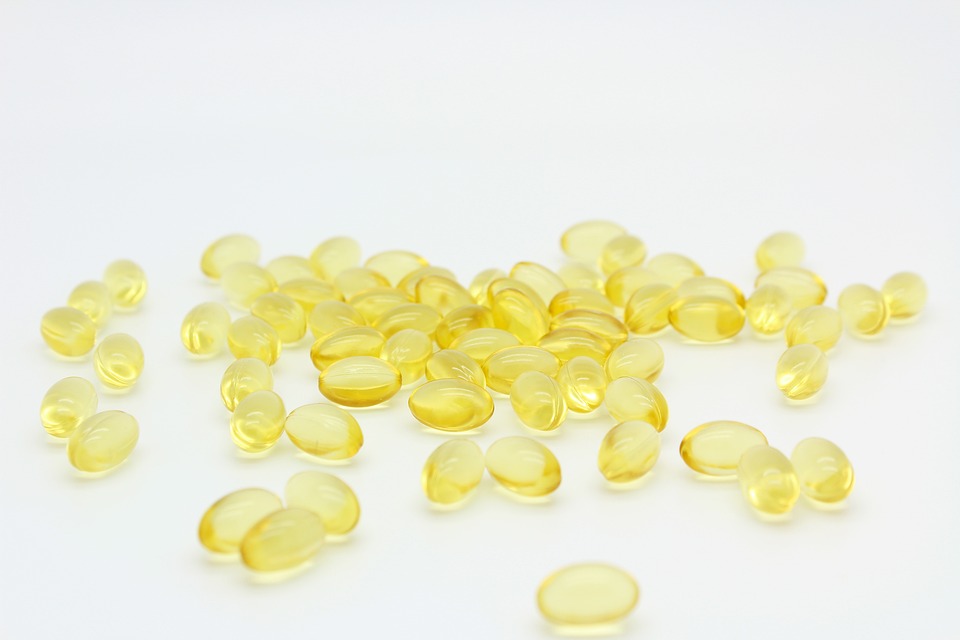Do I really need Omega 3?
from Christian Csida published on 19.02.2023
Fatty acids are important for our well-being, and we consume them every day through our diet. Even though there are different kinds of fats, which can be really confusing, which ones are important and positive for my health? Does my body really need Omega 3 urgently?

How do fatty acids differ?
Let’s start with the basics. Fatty acids can be categorized based on their chemical structure. The following properties are decisive:
- localization of their double bonds
- degree of saturation
- chain length
- isomerization of the double bonds.
Most frequently, we encounter the degree of saturation, because it has to be visibly declared on the food package. As most of you may know, you can distinguish between saturated, monounsaturated and polyunsaturated fatty acids.
Saturated fats, in higher amounts, are mainly found in animal products such as meat, eggs, or milk. The consumption of these fatty acids should be as low as possible because they can, among others, lead to an increase in the unfavorable LDL Cholesterol in the bloodstream [1]. But also a few plant products, like coconut and palm oil, are high in saturated fats. If you take a closer look in the supermarket, you will see that a lot of sweets, especially chocolate and cakes, have palm oil as their main source of fats.
In comparison, unsaturated fats have at least one double bond (monounsaturated) or more (polyunsaturated) in their chemical structure. This already leads us to the localization of the double bonds . It’s crucial for the human body where these double bonds occur because our body is able to produce double bonds after the carbon atom 9 (=Omega 9); however, it cannot make them on the carbon atom 6 (=Omega 6) or 3 (=Omega 3). But that’s enough chemistry for now. (Picture 1)

Omega 3 and Omega 6
Omega 3 as well as Omega 6 are therefore essential and need to be consumed through our diet. But every fat-containing food we eat consists of not just one type of fatty acid, yet it’s a mixture of different (Picture 2).

The most important Omega 6 fatty acid is linoleic acid,while in Omega 3 it is the alpha-linolenic acid (ALA).

Omega 6
Although Omega 6 is essential, there is hardly ever a deficiency in a balanced diet because they are found in a wide variety of plant products such as vegetable oils , nuts, and seeds. These fatty acids are important for the well-being of our body and make up a big part of our cell membrane [2]. However, too much of this nutrient leads to an increased production of the so-called Arachidonic acid, which leads to an increase in inflammatory processes that, in turn, lead to tissue damage [3]. What’s actually really important is the ratio from Omega 6 to Omega 3.
Omega 3
So what’s the benefit of Omega 3? First and foremost, it inhibits inflammation processes inside our body and, therefore, prevents damage to our organs. Studies have also shown a positive impact on lipid levels in our bloodstream, including cholesterol. This further leads to a healthier cardiovascular system and a reduced risk of strokes. Researchers also found a link between the intake of Omega 3 and a reduced risk of getting cancer, as well as a decrease in blood pressure [4]. Lastly, these fatty acids are essential because the body of children needs lots of nutrients for development, especially for the eyes and the brain. Omega 3, therefore, contributes to a healthy brain function at every age [5].
In industrialized western countries, Omega-3 intake is often far below the recommended levels. High amounts of these fatty acids are primarily found in fatty fish like herring and salmon. [6] However, fish intake is low in European countries. [7] The recommendation for fish is just twice per week due to their high levels of the heavy metal, mercury. [8] Walnuts, flax seeds, and the exotic chia seeds contain remarkable amounts of alpha-linoleic. [6] Our body needs two more Omega-3 fatty acids, called eicosapentaenoic acid (EPA) and docosahexaenoic acid (DHA) for health benefits. These two fatty acids can be converted from alpha-linolenic acid, but the conversion amount is insignificant and does not supply the required dose. [9] Fish have all three essential Omega-3 fatty acids but do not synthesize them; instead, they get these nutrients from algae and plankton in their diet. Therefore, consuming the primary source, algae oil, can cut the food chain. Compared to fish, algae oil has no mercury, is more ethical, and better for the environment. [10][11][12]
Conclusion
There are no utterly bad fatty acids because everyone has their own different purpose in our biological system. What matters is the ratio between the different consumed fatty acids, whereby you should focus on essential Omega-6 and Omega-3 and reduce the intake of saturated fats. Ultimately, all the fats we consume build the cell membrane in our body with beneficial or adverse effects. Just consider the inhibitory effect on inflammation by Omega-3 for the long run.

What should I consider when buying Omega-3?
First of all, it makes no sense to buy fish oil because fish have Omega-3 due to their consumption of algae and plankton. Therefore, we can go straight to the main source – algae oil! Two things are important to consider when buying: the taste and the price. For people who don't like algae, there are also flavored options (like lemon) or you can mix it in your yogurt to cover the taste. Regarding the price, there are significant differences in products. Many products contain a lot of olive oil, which reduces the amount of Omega-3 per gram. Furthermore, Omega-3 capsules are often twice as expensive as the oil alone but come with the benefit of not tasting like algae.
Who and in what amount should you take Omega 3?
Basically, everyone who wants to have a healthy and well-balanced diet should consider taking Omega 3. Nutrition societies recommend eating Omega 3-rich fish twice a week. For vegetarians, vegans, and people who, for various reasons, don't eat fish, I suggest eating ALA-rich foods such as walnuts, flaxseed oil, and/or chia seeds, and additionally supplementing with 3g of algae oil (depending on the producer) per day for the intake of DHA and EPA.
How should I take Omega 3?
If you want to reduce inflammation, you should take it in regular intervals throughout the day. If you want to lower your blood pressure or cholesterol, you should take it with a meal.
Sources
1. P. W. Siri-Tarino, Q. Sun, F. B. Hu, and R. M. Krauss, “Saturated fatty acids and risk of coronary heart disease: Modulation by replacement nutrients,” Curr. Atheroscler. Rep., vol. 12, no. 6, pp. 384–390, Nov. 2010, doi: 10.1007/S11883-010-0131-6/METRICS.
2. T. A. Mori and J. M. Hodgson, “Fatty acids: Health Effects of Omega-6 Polyunsaturated Fatty Acids,” Encycl. Hum. Nutr., vol. 2–4, pp. 209–214, Jan. 2013, doi: 10.1016/B978-0-12-375083-9.00100-8.
3. J. R. Nelson and S. Raskin, “The eicosapentaenoic acid:arachidonic acid ratio and its clinical utility in cardiovascular disease,” Postgrad. Med., vol. 131, no. 4, pp. 268–277, 2019, doi: 10.1080/00325481.2019.1607414.
4. S. Punia, K. S. Sandhu, A. K. Siroha, and S. B. Dhull, “Omega 3-metabolism, absorption, bioavailability and health benefits–A review,” PharmaNutrition, vol. 10, p. 100162, Dec. 2019, doi: 10.1016/J.PHANU.2019.100162.
5. K. M. Appleton et al., “Omega‐3 fatty acids for depression in adults,” Cochrane Database Syst. Rev., vol. 2021, no. 11, Nov. 2021, doi: 10.1002/14651858.CD004692.PUB5.
6. “Home - Souci • Fachmann • Kraut Datenbank.” https://www.sfk.online/#/home (accessed Feb. 18, 2023).
7. “Pro-Kopf-Konsum von Fischereierzeugnissen in der EU nach Ländern | Statista.” https://de.statista.com/statistik/daten/studie/30388/umfrage/pro-kopf-verbrauch-von-fischereierzeugnissen-in-der-eu/ (accessed Feb. 18, 2023).
8. “Quecksilber - AGES.” https://www.ages.at/mensch/ernaehrung-lebensmittel/rueckstaende-kontaminanten-von-a-bis-z/quecksilber (accessed Feb. 18, 2023).
9. G. Barceló-Coblijn and E. J. Murphy, “Alpha-linolenic acid and its conversion to longer chain n−3 fatty acids: Benefits for human health and a role in maintaining tissue n−3 fatty acid levels,” Prog. Lipid Res., vol. 48, no. 6, pp. 355–374, Nov. 2009, doi: 10.1016/J.PLIPRES.2009.07.002.
10. A. M. de O. Finco, L. D. G. Mamani, J. C. de Carvalho, G. V. de Melo Pereira, V. Thomaz-Soccol, and C. R. Soccol, “Technological trends and market perspectives for production of microbial oils rich in omega-3,” Crit. Rev. Biotechnol., vol. 37, no. 5, pp. 656–671, Jul. 2017, doi: 10.1080/07388551.2016.1213221.
11. C. P. Rocha, D. Pacheco, J. Cotas, J. C. Marques, L. Pereira, and A. M. M. Gonçalves, “Seaweeds as Valuable Sources of Essential Fatty Acids for Human Nutrition,” Int. J. Environ. Res. Public Health, vol. 18, no. 9, May 2021, doi: 10.3390/IJERPH18094968.
12. R. N. German, C. E. Thompson, and T. G. Benton, “Relationships among multiple aspects of agriculture’s environmental impact and productivity: A meta-analysis to guide sustainable agriculture,” Biol. Rev., vol. 92, no. 2, pp. 716–738, May 2017, doi: 10.1111/BRV.12251.
